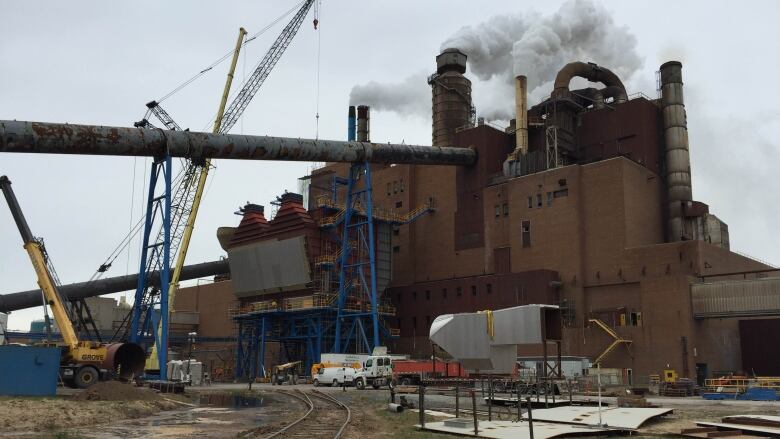Environment Department official defends speedier Northern Pulp assessment
Northern Pulp plans to discharge treated effluent directly into Northumberland Strait

Nova Scotia's top environmental bureaucrat repeatedly defended the province's decision to use a fast-tracked environmental assessment to review a controversial effluent treatment facility being proposed by the Northern Pulp paper mill in Pictou County.
Deputy environment minister Frances Martin told the province's public accounts committee Wednesday that thereview will be thorough, science-based and ensure the environment is not harmed by the new effluent treatment facility.
"How we hold the operator to account is perhaps one of the single most important issues we face in the department," she said.
A law passed several years ago requires Northern Pulp to close its existing effluent treatment facility at Boat Harbour by 2020.
The replacement would discharge about 70 million litres of treated effluent a day via a subsea pipe directly into the Northumberland Strait several kilometres from the mill.
That has worried local fishermen and P.E.I. PremierWade MacLauchlan, who are demanding a more rigorous review oreven a federal environmental assessment.
Martin saidfederal officials from the Department of Fisheries and Oceansand Environment and Climate Change Canada told her last year that Ottawa had no intention of stepping in.
"They didn't believe a federal assessment was warranted," Martin said outside Wednesday's committee meeting.
Public will have 30 days to comment
Martin said it was her decisionlast Julyto apply a so-called Class 1 assessment to the project after Northern Pulp submitted a project description in April 2017.
Once a project is formally submitted, a Class 1 assessment limits the review to 50 days, with a 30-day period for public comment. The department could have applied a Class 2 assessment, which involves an independent panel and can last 275 days.
This project triggered the shorter Class 1 assessment, according to Martin.
"It wasn't the construction of a [pulp and paper]mill. It was a modification of an existing mill," she said.

Critics have called on the company to build a "closed-loop" system to avoid any discharge into the strait, butNorthern Pulp has said thatis not practical.
Martin said the department expects Northern Pulp to submit alternative treatment options as part of its application, which isexpected by this summer.
Nova Scotia Progressive ConservativeParty leadership candidate Tim Houston said the same Class 1 assessment was used on the Alton natural gas storage project in 2007 and it failed to instilpublic confidence in the project.
Eleven years later, Alton gas storage is still embroiled in a court challenge and the construction site is being occupied by Indigenous protesters.
"I'm worried the department is walking Northern Pulp down the same fate as Alton Gas," Houston told the committee.
Martin repeated her assurance that the review will be rigorous and transparent.
As Martin appeared before the committee, the McNeil government issued a news statementannouncing it will soon hire an environmentalprosecutor.
Mill with an image problem
The pulp mill has been operating since 1967. It provides hundreds of jobs in the area and is a critical piece of theprovince's forestindustry.
Butit has also attracted harsh criticism for its environmental record, including from the Pictou Landing First Nation, located next to the current effluent treatment system.
The government's order to close Boat Harbour followed thefailure of the effluent pipe in June 2014 and a peaceful blockade by the Pictou Landing First Nation.

The mill was fined $225,000 for releasing tens of millions of litres of toxic effluent and criticized for lax maintenance by the provincial court judge who issued the fine.
"What assures your department that the culture and practices in the company have changed?" asked NDP MLA Lisa Roberts.
Martin said the departmenthad spent 18 months developing a new 60-page industrial approval for the mill.
"We regularly inspect the mill. We do regularly receive reports and where we find the potential violation for a term or conduit, we have followed up on that," she said.
'Unhealthy level of tension' in Pictou County
The deputy's appearance left author Joan Baxter unimpressed. She wrote a book on the mill's 50-year history and saidpublic hearings are needed to reassure a skeptical public.
"The frustration is still there. People are not convinced there is any change. They've heard this all before," she said.
"At the moment, there is an unhealthy level of tension in PictouCounty and it's understandablepeople feel like they are being pitted against each other."












_(720p).jpg)


 OFFICIAL HD MUSIC VIDEO.jpg)
.jpg)



























































































